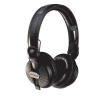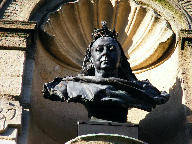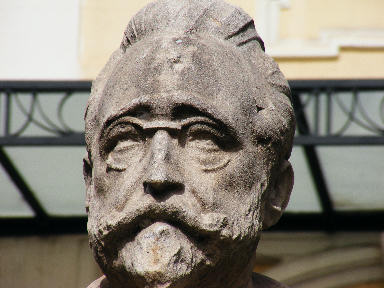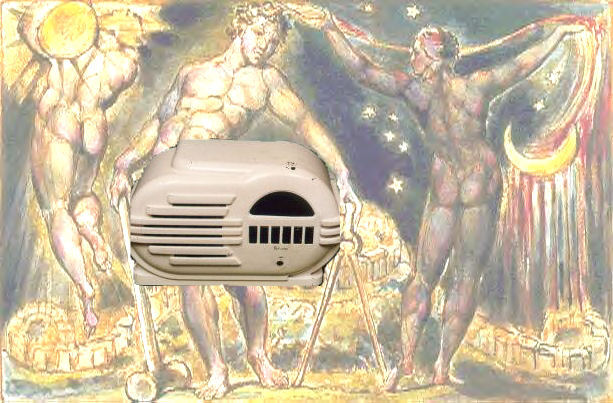Genre
Types of radio plays
- fiction genres & mixed genre (BELOW)
| There are groups of plays or radio plays or films or texts which constitute a 'Western', a 'thriller', a 'horror', a 'comedy', a 'romance', a 'rom-com'. |
| Genre is the type of text being presented. Genre is one of the principal means of product differentiation. |
| There are archetypal examples of these genres by which we measure the texts.Writer and directors also work to produce typical texts within these groups. |
|
FILM: Genre is particularly important in film and TV, and for marketing. |
| VARIATION WITHIN A GENRE: The difference between texts is minimal and systematic within a particular genre. A variation is on a format rather than on absolute novelty. |
|
ADVANTAGES OF GENRE: Genre has the advantages of differentiation with the advantages of an inbuilt requirement for repetition and standardisation. |
| AUDIENCES: Audiences read the texts in terms of how it is different from and similar to, other stories. Response to a genre is the prinmary way of differentiation. |
|
RADIO PLAYS: The listener of the radio play mentally indexes and cross-references between plays already heard. There are echoes between plays, for example, between afternoon plays on BBC Radio 4. |
| There are particularly important archetypes for radio plays. Obvious genres are the radio soap, the thriller, the afternoon play with woman as subject. Note how channel and slot define radio genres. |
|
Most comedy is organised in series (genres), though it is not easy to define borders. Comedy, for example, cuts across classification according to genre. Though that thesis can be questioned. |
| One play can belong to several genres at the same time. Genres are difficult to define in any other terms beyond banal summaries of plots. In part this is because they constantly evolve. |
|
Genre analysis is based on the supposition that there are large numbers of plays in restricted groups and these groups are capable of explanation. The groups can be accounted for both in terms of their narrative structures and ideology. |
| Robert McKee, Story: Substance, Structure, Style and The Principles of Screenwriting (London:Methuen Publishing Ltd., 1999) |
| See also Types of plays |
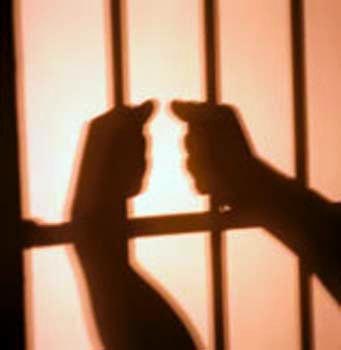
Types of radio plays - fiction genres & mixed genre
|
|
|
|
|
|
|
|
|
|
|
|
|
|
|
|
|
|
|
|
|
|
|
|
|
|
|
|
|
|
|
|
|
|
|
|
|
|
|
|
|
|
|
|
|
Storyboard - layout of scenes and details - how to make it work for you
|
RESEARCH films adopt a generic voice - violation and
development (2) or unique and time-bound phenomenon
easy sort of classification that Westerns, musicals, science
fiction, detective, gangster allow conventions of setting and
conflict, subtle qualities of tone and mood related to other
established genres or straddle generic lines, drawing simultaneously
on a variety of conventions and expectations Ian Peters, Pictorial Signs and the language of film (1981)
32: The western, for example, uses a specific kind of elements to build its story: the rancher, the cowboy, the Indians, the saloon, the stage coach, the horse, the gun, the railway, the jail, the bank (Bellour, 1966: 89 ff.) The themes, people, situations and backgrounds of the postwar neo-realistic films in Italy are very different from the world of the spectacular types of films that preceded the neo?realistic cinema. Now, if the same elements are employed again and again in the construction of such partial worlds in a specific genre or film school and if these elements are always combined more or less according to the same principles, one may speak of a code. If a given film is recognized by the viewer as a representation of a given partial world, it is due to his knowledge of that code. I would like to call this a figuration?code (for lack of a better term) because it codifies the kind of world that is represented or "figured" by that film. Of course, as many different figuration?codes may be distinguished as there are genres, schools, movements or other groups of film. (See. 21)
Graeme Turner, Film as a social practice 24 Such work revealed how dynamic genres are, how they continually change, modulate, and redefine themselves; genre emerges as the product of a three?way negotiation between audiences, film?makers, and film producers. This raised an issue which became prominent later: the role of the film as a commodity ? a marketable product sold to an audience through, among other things, its genre. More significantly, these enquiries. began a long series of reevaluations of the notion of genre, the study of the relationships between audiences and movies, and a better understanding of the pleasure ?of the familiar and predictable in popular entertainment ? partially qualifying the hitherto conventional privileging of the novel, the unique, and the original. Genres are composed from sets of narrative and representational conventions. To understand them, audiences must, in a sense, bring the set of rules with them into the cinema, in the form of the cultural knowledge of what a western or a musical is. The role of the audience in determining meaning cannot be overestimated. Genre is one of the determinants of the audience's choice of a film, not only in terms of whether or not they possess the competencies to appreciate that genre, but in terms of what kind of film it is they want to see, and whether the specific example of that general kind of film (say, a comedy) suits their taste ? is it a youth comedy like Risky Business or a zany adult comedy like Ruthless People? Finally, the film itself indicates how it is to be understood through its own signifying systems by its intertextual links with other films.
Bill Nichols, Representing reality, issues and concepts in
documentary
Bibliography on genre (research) Grant, Barry Keith. Film Genre: from Iconography to Ideology. London: Wallflower, 2007. Neale, Steve, Genre and Hollywood. London: Routledge, 2000. Neale, Steve, Introduction. Genre and Contemporary Hollywood.
Ed. Steve Neale. London: BFI,
|
|
|

